
- Medium
- Projection
- Interaction
A lot of research was
done before the decisions of using the table and the stylus were reached.
Medium
First we needed to decide on the type of medium to present EventScope.
It had to durable and robust. We decided to proceed with a projected table
similar to the Jam-O-World
and Virtual
Workbench. Below are several options that were also considered.
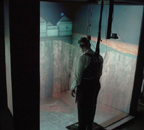
|
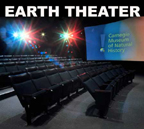
|
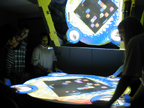
|
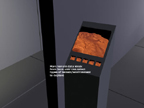
Kiosk |
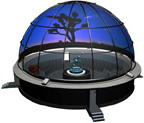
|

|
Projection
Once a table was chosen, we needed to decide whether the table was front
projected (from above the table like Jam-O-World) or rear projected (from
beneath the table like the Virtual Workbench).
Rear projection was our initial choice due to the table being self-contained (no equipment hanging above and no shadows from people interacting with the device. However the table design became very complicated as well as the feasibility and cost of projecting onto a surface near the projector. In the end we had to go to front projection.
Front projection has the benefits of very simple table construction, ability to use a wide range of projectors, and can be done for a reasonable cost. However, the drawbacks include shadows on the table, hanging of equipment such as the projector and even a mirror if the ceiling isn't high enough.
Interaction
Now we needed to choose the method of interaction for the users. It needed
to be robust and intuitive. Many possibilities were discussed but two
in particular were considered thoroughly.
The first was to make the entire surface of the table touch sensitive so that any number of users could touch it and interact directly with the images projected on the top. The actual implementation became to difficult to do. Several companies were contacted about possible technologies that could be utilized. Most of them however could not handle more than one are being touched at the same time (or it would give an average of the touches which is useless information for our purposes) and the ones that could were very expensive and often confined to a small area.
The second option was to track an infrared LED using a camera and computer vision. When a user touches a stylus to the surface of the table, an infrared LED turns on. This is invisible to the user but the camera above sees the infrared light and sends the information to a computer which determines the location of the stylus. This idea was initially rejected in favor of touch sensitivity, largely due to the extra hardware needed (the camera and the infrared LED). However this became the only option due to the difficulty with touch sensitivity.